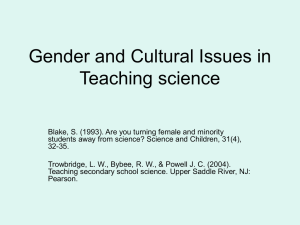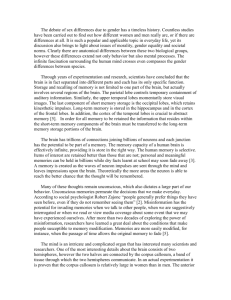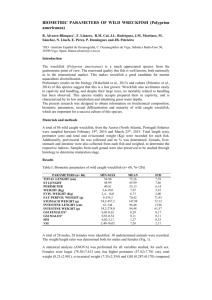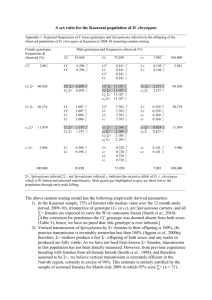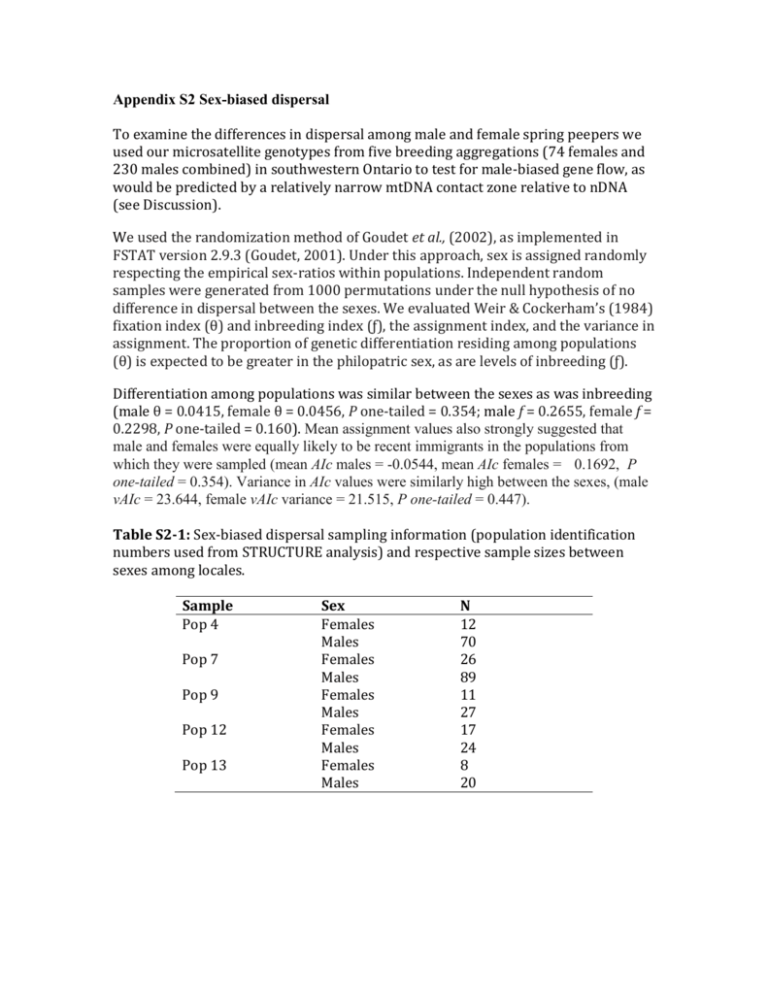
Appendix S2 Sex-biased dispersal
To examine the differences in dispersal among male and female spring peepers we
used our microsatellite genotypes from five breeding aggregations (74 females and
230 males combined) in southwestern Ontario to test for male-biased gene flow, as
would be predicted by a relatively narrow mtDNA contact zone relative to nDNA
(see Discussion).
We used the randomization method of Goudet et al., (2002), as implemented in
FSTAT version 2.9.3 (Goudet, 2001). Under this approach, sex is assigned randomly
respecting the empirical sex-ratios within populations. Independent random
samples were generated from 1000 permutations under the null hypothesis of no
difference in dispersal between the sexes. We evaluated Weir & Cockerham’s (1984)
fixation index (θ) and inbreeding index (ƒ), the assignment index, and the variance in
assignment. The proportion of genetic differentiation residing among populations
(θ) is expected to be greater in the philopatric sex, as are levels of inbreeding (ƒ).
Differentiation among populations was similar between the sexes as was inbreeding
(male θ = 0.0415, female θ = 0.0456, P one-tailed = 0.354; male f = 0.2655, female f =
0.2298, P one-tailed = 0.160). Mean assignment values also strongly suggested that
male and females were equally likely to be recent immigrants in the populations from
which they were sampled (mean AIc males = -0.0544, mean AIc females = P
one-tailed = 0.354). Variance in AIc values were similarly high between the sexes, (male
vAIc = 23.644, female vAIc variance = 21.515, P one-tailed = 0.447).
Table S2-1: Sex-biased dispersal sampling information (population identification
numbers used from STRUCTURE analysis) and respective sample sizes between
sexes among locales.
Sample
Pop 4
Pop 7
Pop 9
Pop 12
Pop 13
Sex
Females
Males
Females
Males
Females
Males
Females
Males
Females
Males
N
12
70
26
89
11
27
17
24
8
20








